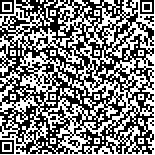| Quote
: |
杨鑫勇,王凯华,刘丹宁,王亚南,周嫦艳.壮通饮对脑缺血再灌注小鼠神经细胞损伤的影响及其作用机制[J].湖南中医药大学学报英文版,2023,43(7):1155-1164.[Click to copy
] |
|
| |
|
|
| This paper
:Browser 1083times Download 448times |
| 壮通饮对脑缺血再灌注小鼠神经细胞损伤的影响及其作用机制 |
| 杨鑫勇,王凯华,刘丹宁,王亚南,周嫦艳 |
| (广西中医药大学研究生院, 广西 南宁 530200;广西中医药大学附属国际壮医医院, 广西 南宁 530200) |
| 摘要: |
| 目的 探讨壮通饮对脑缺血再灌注小鼠神经细胞损伤的影响及其作用机制。方法 采用线栓大脑中动脉栓塞法诱导建立小鼠脑缺血再灌注模型,造模成功后的6~7周龄雄性C57BL6J小鼠随机分为模型组、壮通饮组、阿司匹林组、壮通饮联合阿司匹林组,各组再随机分为1、3、7 d时点组,另设不造模的空白组和假手术组,每组10只,按照分组灌胃给药至相应时点。记录各组每日体质量及Zea Longa评分,采用TTC染色法测定脑缺血小鼠的脑梗死体积百分比;HE染色观测缺血病理改变情况,TUNEL染色比较神经细胞凋亡情况,透射电镜观测神经细胞线粒体结构改变及自噬情况,Western blot以及RT-PCR技术分析P62、LC3Ⅱ/LC3Ⅰ、Bc1-2/腺病毒E1B19kD相互作用蛋白3(Bc1-2/adenovirusE1B 19kDa interacting protein3,BNIP3)、β-actin蛋白或基因表达情况。结果 与空白组、假手术组相比,模型组体质量明显下降(P<0.05),TTC染色可见脑组织缺血梗死,出现神经细胞凋亡及线粒体损伤。与模型组相比,各给药组体质量升高(P<0.05),行为学评分降低(P<0.05),梗死体积降低,且持续减小(P<0.05);神经细胞凋亡率降低(P<0.05)。模型组线粒体结构损伤明显较重,在1 d时各给药组即可观测到较多线粒体自噬小体,而模型组在3 d时才可观测到,在7 d时各给药组大多数线粒体结构完整,可见被溶酶体消化完成的脂滴,而模型组可见自噬小体与自噬溶酶体同时存在。与模型组比较,各给药组P62蛋白表达在1 d时降低,3、7 d时升高(P<0.05);LC3Ⅱ/LC3Ⅰ的蛋白比值以及P62、BNIP3的基因表达水平在1 d时升高,7 d时降低(P<0.05)。在各给药组中,壮通饮联合阿司匹林组各项指标均优于其他给药组及模型组(P<0.05)。结论 壮通饮能够减轻脑缺血再灌注小鼠的神经细胞损伤,这可能与促进神经细胞发生线粒体自噬,维持细胞内线粒体稳态有关。 |
| 关键词: 壮通饮 脑梗死 缺血再灌注 神经功能 线粒体自噬 |
| DOI:10.3969/j.issn.1674-070X.2023.07.002 |
| Received:April 14, 2023 |
| 基金项目:国家自然科学基金项目(81960801,82160946);广西中医药大学引进博士科研启动基金项目(2018BS063);广西一流学科建设开放课题(2019XK148);广西自然科学基金项目(2021GXNSFAA196012);广西中医药大学第二批“岐黄工程”高层次人才团队培育项目(2021008);广西壮族自治区中医药管理局自筹经费科研课题(GXZYZ20210103);广西中医脑病重点学科项目(GZXK-Z-20-14);广西中医药大学校级重点硕士研究生科研创新项目(YCSZ202030)。 |
|
| Effects of Zhuangtong Drink on cerebral ischemia-reperfusion-induced nerve cell injury in mice and its mechanism |
| YANG Xinyong,WANG Kaihua,LIU Danning,WANG Yanan,ZHOU Changyan |
| (Graduate School, Guangxi University of Chinese Medicine, Nanning, Guangxi 530200, China;International Zhuang Medicine Hospital of Guangxi University of Chinese Medicine, Nanning, Guangxi 530200, China) |
| Abstract: |
| Objective To investigate the effects of Zhuangtong Drink on nerve cell injury induced by cerebral ischemia-reperfusion in mice and its mechanism. Methods The model of cerebral ischemia-reperfusion in mice was established by thread embolism induced middle cerebral artery occlusion (MCAO). Six to seven-week-old male C57BL6J mice were randomly divided into model group and treatment groups including Zhuangtong Drink group, aspirin group and Zhuangtong Drink combined with aspirin group after modeling. Each group was randomly subdivided into 1 d, 3 d, and 7 d groups. In addition, blank group and sham-operated group without modeling were also set up, 10 mice per group. The corresponding drugs were administered by gavage in the groups to the corresponding time points. The daily body weight and Zea Longa scores of each group were recorded; The percentage of cerebral infarction volume in mice with cerebral ischemia was measured by TTC staining; the ischemic pathological changes, neuronal apoptosis, and structural changes and autophagy of nerve cell mitochondria were observed by HE staining, TUNEL staining, and transmission electron microscope, respectively; the protein or gene expressions of P62, LC3 II/LC3 Ⅰ, Bc1-2/adenovirusE1B 19kDa interacting protein3(BNIP3) and β-actin were analyzed by Western blot and RT-PCR techniques. Results Compared with blank group and sham-operated group, the body weight of mice in model group decreased significantly (P<0.05), and the behavioral scores increased (P<0.05); TTC staining showed cerebral ischemic infarction, neuronal apoptosis and mitochondrial injury. Compared with model group, the body weight of mice in treatment groups increased (P<0.05); the behavioral scores, mortality rates, as well as the rate of neuronal apoptosis decreased (P<0.05); the infarction volume was reduced and continued to be lowered (P<0.05). The structural damages of mitochondria in mice of model group were obviously more severe. More mitophagosomes could be observed in treatment groups on the 1st day, while in model group on the 3rd day. Most of the mitochondria in treatment groups were intact on the 7th day, and the lipid droplets digested by lysosomes could be seen, while in model group, autophagosomes and autolysosomes coexisted. Compared with model group, the expression of P62 protein in each treatment group decreased on the 1st day and increased on the 3rd and 7th day (P<0.05), while LC3 II/LC3 Ⅰ ratio and the gene expression levels of P62 and BNIP3 increased on the 1st day and decreased on the 3rd and 7th day (P<0.05). Among treatment groups, the indexes of Zhuangtong Drink combined with aspirin group were better than other treatment groups and model group (P<0.05). Conclusion Zhuangtong Drink can relieve the injury of nerve cells in cerebral ischemia-reperfusion mice, which may be related to the promotion of nerve cell mitophagy and the maintenance of intracellular mitochondrial homeostasis. |
| Key words: Zhuangtong Drink cerebral infarction ischemia-reperfusion neurological function mitophagy |
|

二维码(扫一下试试看!) |
|
|
|
|


